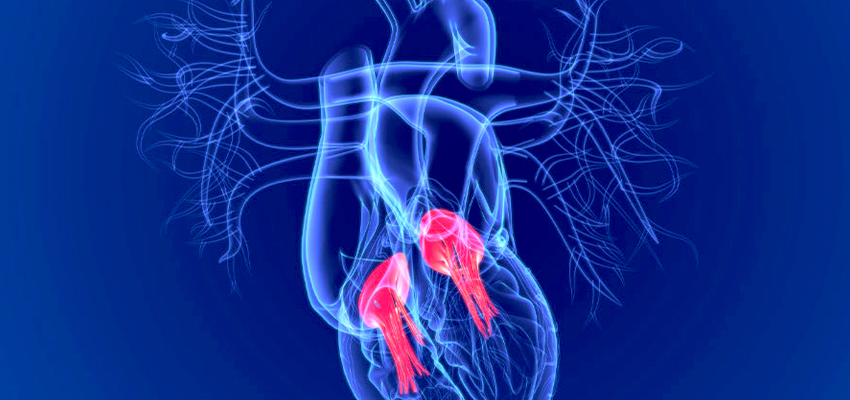Valvular Heart Disease

Valvular Heart Disease
Valves are like doors inside the heart chambers that control the flow of heart. An interesting fact is that heart sounds are created due to opening and closure of these heart valves.
There are four main heart valves: Aortic valve, mitral valve, pulmonary valve and tricuspid valve.
When these heart valves get diseased, they may need to be repaired or replaced depending on the valve condition and the disease affected.
Valve Problems:
Rheumatic Valvular Heart disease: Sequelae of Rheumatic fever in childhood, affecting more commonly Mitral valve and also at times Aortic valve or both simultaneously.
Degenerative valvular heart disease: Due to age related progressive calcium deposition on the valve making it difficult to open and close. Most commonly affected valve is Aortic valve.
Congenital (Since Birth): Bicuspid Aortic valve – They present during the 40-50 age group, either as leakage(regurgitation) or tightening of the valve (stenosis).
Myxomatous Mitral valve – MVP - Mitral valve prolapse: Due to change in composition and further weakening the valve.
Infective Endocarditis of the valve: Active infection in the entire valve or part of it. Affected valve needs to be replaced.
Mode of treatment :
Valve repair: Complex repair where we try to preserve the native original valve. This can be offered only in few selected patients depending upon the disease.
Valve replacement: Changing the valve.
Mechanical (Metal) long lasting valve.
Bioprosthetic valve: Made of part of animal’s heart to suit patients better.
Choice of valve and technique is eventually decided after discussing with patients.
Method :
Conventional Valve repair or replacement: Cut (6-8 inches) is made in the center of the chest by cutting the chest bone.
MICS: Minimal invasive where a small cut (3-4 inches) is made on the chest wall. Is associated with lesser complications and faster recovery.